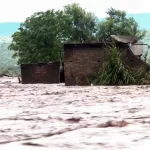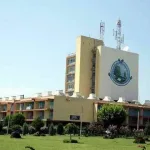The Glaciers in the Himalayan are melting away faster than ever. The glaciers are very sensitive to the climate and they act according to the temperature and precipitation. And, when it is hot, it melts a lot. Villages nestled far up on the hillsides are at high risk.
Lakes that form in the glaciers often breach the ice, and the accumulated water bursts like a Tsunami, causing flash floods that sweep away everything in the path. Meanwhile, an increasing number of heatwaves in the mega cities firstly are driving up water consumption and secondly, sending people from the plain areas into the mountains to escape the scorching heat waves of the plains in the summers.
This is what unfolded in July 2023 in the Mountains of Himachal Pradesh and Ladakh when the rains along with flash floods brought death and destruction and immensely impacted the Himalayan region. Yet another round of incessant rainfall in Himachal in the second week of August has added to the already climate disaster. The question is despite many past warnings why do we keep on putting pressure on the volatile ecosystem of the Mountains? Are we ready for a climate policy, yet?
The mountains of Himachal-Pradesh and Ladakh have become one of the favorite tourist destinations for domestic tourists, especially in the summer season. This high demand has directly put pressure on the people of the mountains to fasten the supply and, therefore put more pressure on the already volatile ecosystem and terrain. The Delhi-Manali-Ladakh route is choked with traffic during the tourist season and Manali is jam-packed with tourists and vehicles.
This June while traveling back to my hometown Zanskar, it was shocking to see the Mall Road in Manali absolutely jam-packed with tourists, rather irresponsible tourists who were discarding wrappers freely on the roads. The road to Solang Valley (which is actually just a piece of land), is jam-packed from morning, and what you actually see there is a sheet of leftover ice from the winters. After crossing the Atal tunnel, on reaching Darcha which is the last village of Himachal we encounter a long line of vehicles on the Darcha Bridge ready to enter Ladakh. Although the passes to Ladakh opened as early as April this year the passes were closed many times due to heavy snowfall in the high passes.
This time in mid-June in order to avoid traffic, new rules were made, and the traffic movement was one way (one day from Ladakh to Manali and vice versa). Nature had already started giving signals that not everything is fine in the Mountains. So passing the Darcha Bridge, and entering Zanskar via Shinku la Pass has become a challenge of a sort this time for us due to bad weather.
There was so much snow on the way to the top of the pass, that only a skilled driver could drive through the thick sheet of snow and huge blocks of snow on both sides (we also had snow chains, just in case). There were so many hints of a disaster waiting till the time we reached Padum (and we forgot about climate change).
Come July and nature again started giving hints about climate change, it snowed like cats and dogs on the 09th of July in entire Ladakh and there was a red alert warning issued for Leh town. Locals in Padum told us that it snowed in July after many years in Ladakh. Just when we were planning to head back, news about landslides on the Kargil side poured in, but the biggest disaster unfolded in Himachal where the heavy downpour flooded the region and washed away highways, bridges, and houses. There was a flash flood in Leh town that brought mud to the Leh market and adjoining areas. Holidays turned into a nightmare for tourists in Himachal and Ladakh who were evacuated and rescued from affected areas.
The flash floods sent alarming signals of climate change as they brought with them waste materials (wrappers, bottles, etc.) from adjoining areas. Many of the hotels built alongside the river with a river view in Himachal were completely washed away during the floods this time. The manner in which Leh’s construction work due to tourism is booming has hardly left any space for water to flow a natural course and the danger of over flooding is looming large.
There are colonies in Leh where there is no space for rescue vehicles to move people or drain water in case of a flood. It is an open secret that the majority of hotels and cafes in Himachal are built near the river thus adding to the degradation of nature.
The truth is that climate change is real and it is eroding the mountains of the Himalayas. The glaciers are receding and it is indirectly affecting the mountain agriculture and the traditional lifestyle of the people of these regions.
There are many examples of nomads in Ladakh who had to abandon their nomadic lifestyle due to a lack of greener pastures in the mountains for their herds and relocate to Leh doing odd jobs for survival. In some cases, people have abandoned the whole village (Upper Kulum-55 Km from Leh) due to scarcity of water and migrated to lower areas in search of water and livelihood. The 2010 flash floods had a huge impact on the village and forced them to flee.
In the Adjoining village of Igoo people fear the same fate and might suffer from water scarcity. On top of it, the ever-increasing tourist rush in Ladakh and Himachal is putting lots of pressure on the already melting ecosystem of these mountain regions.
There is a need to stop digging the mountains and construction in the catchment areas of the Himalayas in the name of development. The need of the hour is a revised climate policy or a sustainable tourism strategy for the mountain regions, which must impose strict limits on a number of visitors, provide universal basic income to the local population, and invest in ecological restoration. Bhutan-style policy needs to be adopted or these areas will be destroyed.





